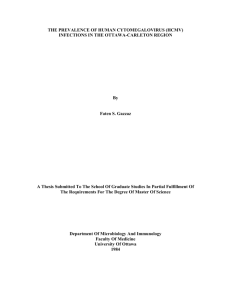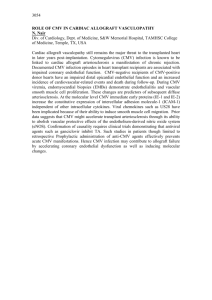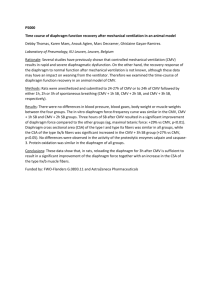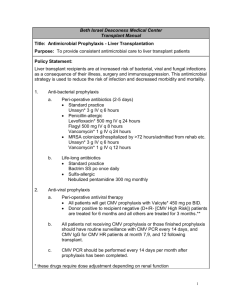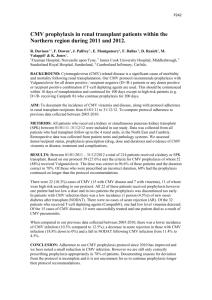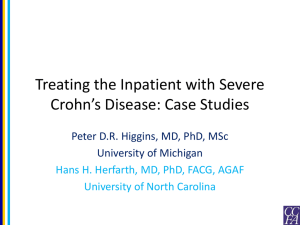SURFACTANT DEFICIENT RABBITS RECEIVING CONVENTIONAL
advertisement
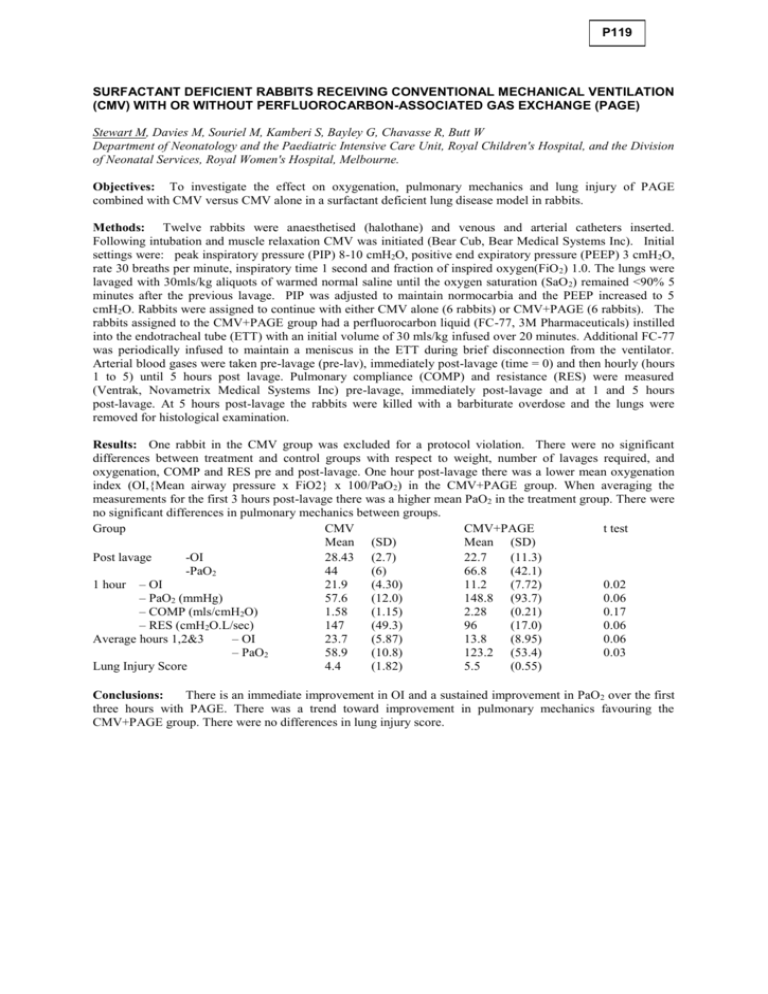
P119
SURFACTANT DEFICIENT RABBITS RECEIVING CONVENTIONAL MECHANICAL VENTILATION
(CMV) WITH OR WITHOUT PERFLUOROCARBON-ASSOCIATED GAS EXCHANGE (PAGE)
Stewart M, Davies M, Souriel M, Kamberi S, Bayley G, Chavasse R, Butt W
Department of Neonatology and the Paediatric Intensive Care Unit, Royal Children's Hospital, and the Division
of Neonatal Services, Royal Women's Hospital, Melbourne.
Objectives: To investigate the effect on oxygenation, pulmonary mechanics and lung injury of PAGE
combined with CMV versus CMV alone in a surfactant deficient lung disease model in rabbits.
Methods: Twelve rabbits were anaesthetised (halothane) and venous and arterial catheters inserted.
Following intubation and muscle relaxation CMV was initiated (Bear Cub, Bear Medical Systems Inc). Initial
settings were: peak inspiratory pressure (PIP) 8-10 cmH2O, positive end expiratory pressure (PEEP) 3 cmH 2O,
rate 30 breaths per minute, inspiratory time 1 second and fraction of inspired oxygen(FiO 2) 1.0. The lungs were
lavaged with 30mls/kg aliquots of warmed normal saline until the oxygen saturation (SaO 2) remained <90% 5
minutes after the previous lavage. PIP was adjusted to maintain normocarbia and the PEEP increased to 5
cmH2O. Rabbits were assigned to continue with either CMV alone (6 rabbits) or CMV+PAGE (6 rabbits). The
rabbits assigned to the CMV+PAGE group had a perfluorocarbon liquid (FC-77, 3M Pharmaceuticals) instilled
into the endotracheal tube (ETT) with an initial volume of 30 mls/kg infused over 20 minutes. Additional FC-77
was periodically infused to maintain a meniscus in the ETT during brief disconnection from the ventilator.
Arterial blood gases were taken pre-lavage (pre-lav), immediately post-lavage (time = 0) and then hourly (hours
1 to 5) until 5 hours post lavage. Pulmonary compliance (COMP) and resistance (RES) were measured
(Ventrak, Novametrix Medical Systems Inc) pre-lavage, immediately post-lavage and at 1 and 5 hours
post-lavage. At 5 hours post-lavage the rabbits were killed with a barbiturate overdose and the lungs were
removed for histological examination.
Results: One rabbit in the CMV group was excluded for a protocol violation. There were no significant
differences between treatment and control groups with respect to weight, number of lavages required, and
oxygenation, COMP and RES pre and post-lavage. One hour post-lavage there was a lower mean oxygenation
index (OI,{Mean airway pressure x FiO2} x 100/PaO 2) in the CMV+PAGE group. When averaging the
measurements for the first 3 hours post-lavage there was a higher mean PaO2 in the treatment group. There were
no significant differences in pulmonary mechanics between groups.
Group
CMV
CMV+PAGE
t test
Mean (SD)
Mean (SD)
Post lavage
-OI
28.43 (2.7)
22.7
(11.3)
-PaO2
44
(6)
66.8
(42.1)
1 hour – OI
21.9
(4.30)
11.2
(7.72)
0.02
– PaO2 (mmHg)
57.6
(12.0)
148.8 (93.7)
0.06
– COMP (mls/cmH2O)
1.58
(1.15)
2.28
(0.21)
0.17
– RES (cmH2O.L/sec)
147
(49.3)
96
(17.0)
0.06
Average hours 1,2&3
– OI
23.7
(5.87)
13.8
(8.95)
0.06
– PaO2
58.9
(10.8)
123.2 (53.4)
0.03
Lung Injury Score
4.4
(1.82)
5.5
(0.55)
Conclusions:
There is an immediate improvement in OI and a sustained improvement in PaO 2 over the first
three hours with PAGE. There was a trend toward improvement in pulmonary mechanics favouring the
CMV+PAGE group. There were no differences in lung injury score.
